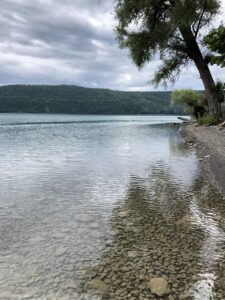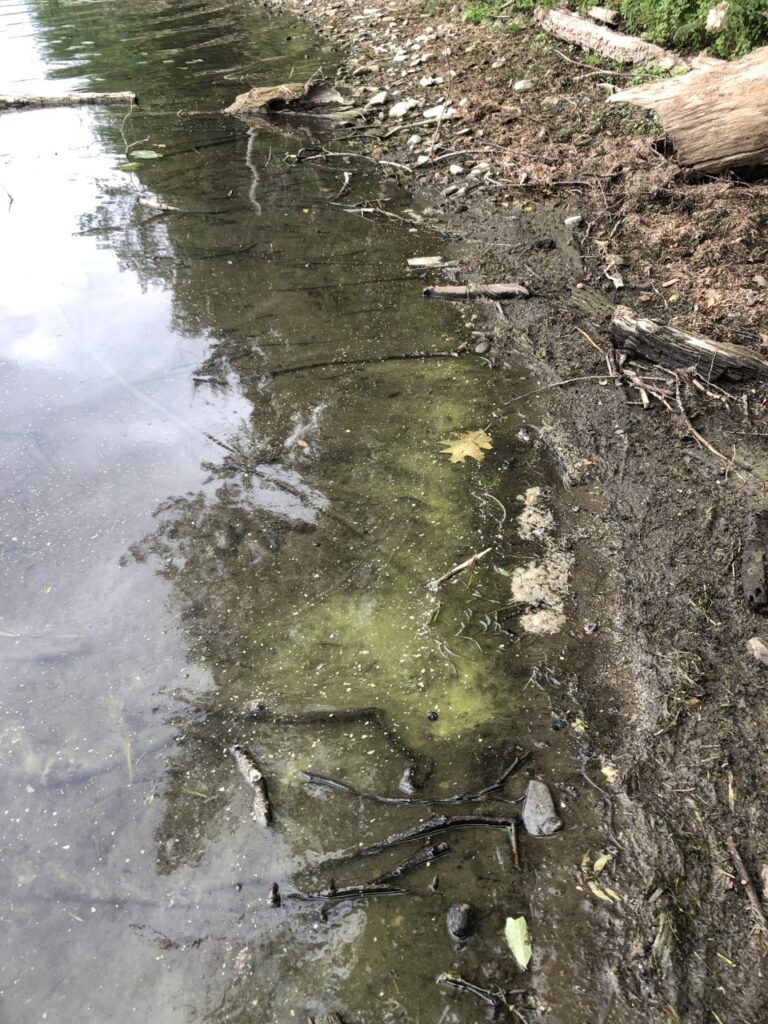Lake Update
Biological Field Station update
on algae bloom in Otsego lake

The Biological Field Station (BFS) collected samples for toxin analysis around Otsego Lake yesterday, 22 August 2022. All sites had detectable levels of the toxin microcystin, though concentrations lake-wide were generally less than last week. Results for each location are below. We provide these results for informational purposes and to aid in decision-making; these results represent a snapshot in time. Bloom conditions are known to change rapidly with weather. When there are visible accumulations on the shoreline or the water surface, caution is warranted. A link to DOH guidance is below. The cyanobacteria causing the bloom is called Microcystis aeruginosa.
Sample Collection Notes: Collection began at 10:00am at Three Mile Point; we proceeded clockwise around the lake. Weather conditions: overcast, occasional light rain, Air temp 70° F. No surface accumulations were visible where samples were collected. Small accumulations were observed in protected areas around boats and docks at both BFS properties.
To put these concentrations into context, according to the Department of Health Regulated Swimming Beaches are closed based on visual indication of a bloom and re-opened after the bloom has dissipated (visual assessment) and the total microcystin concentration is less than 4 ug/L in a sample collected the following day.Link to Dept. of Health Bloom Response and Regulated Beaches page.

| Sample Location (22 August 2022) | Total Microcystin (µg/L) |
| Three Mile Point Swimming Area | 0.4 µg/L |
| 5 Mile Point Shore East of Docks | 0.6 µg/L |
| BFS Thayer Boathouse | 1.3 µg/L |
| Springfield Public Landing Swimming Area | 1.6 µg/L |
| Fairy Springs Park Swimming Area | 0.3 µg/L |
| BFS Main Laboratory Dock (Rat Cove) | 0.2 µg/L |
Samples collected at Glimmerglass State Park Beach, Cooperstown Country Club, and an open water mid-lake site were not analyzed due to a lab error.
Conditions at those locations were similar to those observed at Three Mile Point and BFS Main Laboratory Dock.
The method of analysis that we are using is Total Microcystin ADDA ELISA (EPA Method 546); results in micrograms per liter (µg/L). We plan to sample again Thursday (Aug 25) and will have results Friday. We will post updates on the BFS homepage.



I enjoy your article
I enjoy your article
Is it possible for you to do testing in the Peggs Bay area where there are several camps? The only sites I see on your list on the east side of the lake are Fairy Springs and Glimmerglass. Those of us who live in Peggs Bay would appreciate any information you could provide.
Thank you!
Is it possible for you to do testing in the Peggs Bay area where there are several camps? The only sites I see on your list on the east side of the lake are Fairy Springs and Glimmerglass. Those of us who live in Peggs Bay would appreciate any information you could provide.
Thank you!